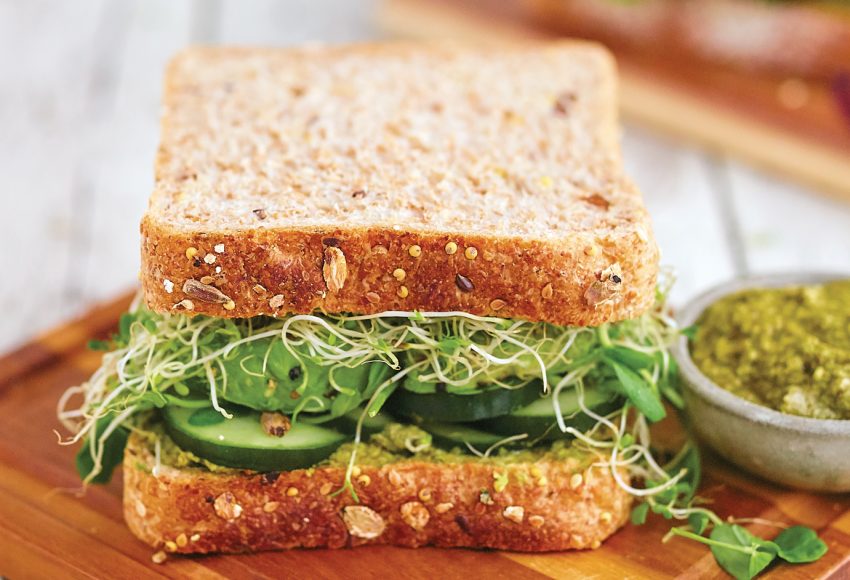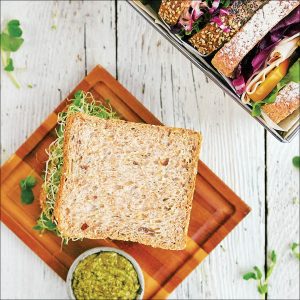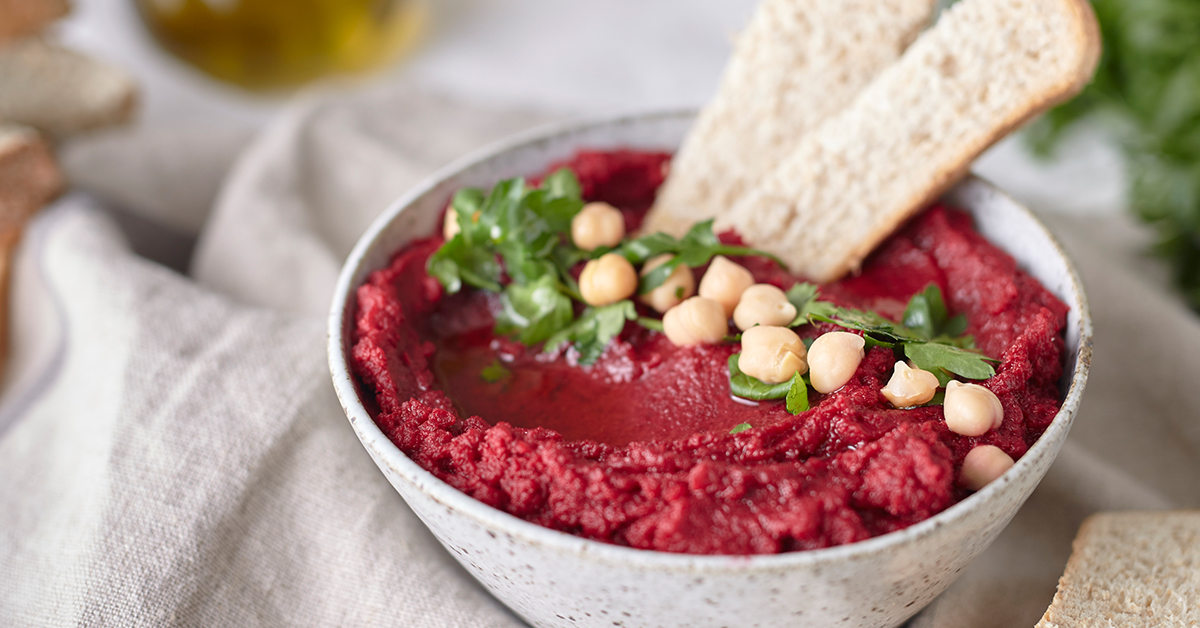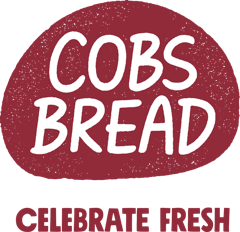Your Health Questions – Part 2

Our Registered Dietitian, Stephanie Dang, is back to answer more of your health-related questions!
What bread is good for diabetics? I was recently diagnosed with Type 1 Diabetes – as a result, I now have to count the number of net carbs in everything I eat. Which of your products contain the least amount of Net Carbs?
 Whole grain breads are good for people with diabetes because of the higher fibre content versus white breads. Pumpernickel bread is also a good choice, because it is made with coarsely ground rye flour (containing soluble fibre) and a sourdough starter (which is acidic, and lowers the glycemic load of the bread). Evidence suggests that soluble fibre can slow down the rate that food empties from your stomach, which helps control blood glucose levels.
Whole grain breads are good for people with diabetes because of the higher fibre content versus white breads. Pumpernickel bread is also a good choice, because it is made with coarsely ground rye flour (containing soluble fibre) and a sourdough starter (which is acidic, and lowers the glycemic load of the bread). Evidence suggests that soluble fibre can slow down the rate that food empties from your stomach, which helps control blood glucose levels.
As for products containing the least amount of net carbs, it depends on how much of each product you are eating (or the “serving size”). For simplicity, let’s say a serving size of 2 slices of bread. First, let’s clarify – you can find the net carbohydrates by taking the grams of total carbohydrates, minus grams of fibre = grams of net carbohydrates. COBS has Mini Loaves, which have the lowest amount of net carbs because they are smaller, and contain good amounts of fibre. In particular, the Country Grain Mini Loaf and Whole Wheat Mini Loaf.
2 slices of Country Grain Mini Loaf: 19 grams carbohydrates – 3 grams fibre = 16 grams net carbohydrates for 2 sandwich slices
2 slices of Whole Wheat Mini Loaf: 20 grams carbohydrates – 3 grams fibre = 17 grams net carbohydrates for 2 sandwich slices.
COBS Bread offers two options for sliced bread. To lower the carbohydrate content of your breads, ask for them to be “thinly sliced” or “sandwich sliced”. The product nutrition information is based on the thinner slice, and you can find all of the product nutrition information for COBS Bread on the Product Pages.
What are some good sources of fibres to help reduce cholesterol levels?
Both your eating habits as well as your physical activity can affect blood cholesterol levels. There are two types of blood cholesterol: LDL (low density lipoproteins, also known as “bad cholesterol”), and HDL (high density lipoproteins, also known as “good cholesterol”). LDL is known as bad cholesterol because it can form plaque on artery walls and create blockages in blood flow. HDL, on the other hand, helps remove LDL cholesterol from your arteries. We want high HDL and low LDL.
Fibre, specifically soluble fibre, can help lower cholesterol levels. Aim for 10-25 grams of soluble fibre per day. Some food sources of soluble fibre include:
- Legumes: chickpeas, beans, lentils, peas
- Whole grains: whole grain bread, quinoa, barley, oatmeal, brown rice
- Chia seeds and flax seeds
- Oat bran
- Barley
- Fruits and vegetables: oranges, pears, avocado, brussel sprouts
There are other dietary and lifestyle changes you can make to lower cholesterol levels, such as choosing foods lower in saturated fat, avoiding hydrogenated or trans fats and replacing with unsaturated fats, including foods with plant sterols, and maintaining a healthy body weight. To find out more about how to lower your cholesterol levels, contact a Registered Dietitian such as myself.
How can I make cooked veggies more appetizing, especially since I work full time and don’t enjoy eating veggies that much?

Vegetables have a variety of important vitamins and minerals, and are also an excellent source of fibre. Here are some ideas to incorporate more vegetables into your diet:
Roasted vegetables are an easy, customizable dish depending on which vegetables and spices you like. Just chop up some vegetables and throw them in the oven. Try this recipe for Seasoned Roasted Vegetables.
- Add a handful of spinach to your smoothie – you can’t taste it!
- Whole grain crackers or whole wheat pita with vegetable dips, such as salsa (load your salsa with tomatoes, beans, peppers, and corn), and guacamole
- Don’t like the taste of vegetables? Use lots of spices when cooking! Examples: paprika, curry powder, oregano, dill, garlic, rosemary, ground black pepper, and chili flakes
- Cut up raw vegetables and dip in your favorite tzatziki or hummus (like the beet hummus recipe seen above)
- Stews, soups, and pasta sauces are great ways to add extra vegetables, for example carrots, zucchini, onion, corn, and tomatoes
- Vegetables at breakfast! Include your favorite vegetables in omelettes or frittatas, mixed into your hashbrowns, or breakfast sandwiches. Some vegetables that go well with breakfast dishes include spinach, arugula, butternut squash, tomatoes, avocado, and bell peppers
What are the main nutrients that vegetarians and vegans often miss out on? I don’t want to always rely on veggie meats/soy/wheat products for my protein!
Some common nutrients that vegetarians and vegans often miss out on are iron, vitamin B12, zinc, calcium, and vitamin D. However, it is possible to eat a well-balanced vegetarian or vegan diet if you are able to do some research and meal planning. Here are some vegetarian protein sources that also contain some of these important nutrients:
- Fortified Plant-Based Milks: fortified soy milk is the most nutritionally similar to cow’s milk (contains more protein than other plant milks). For people worried about their soy intake, 2-3 servings of soy products per day has actually shown to have significant health benefits. For more information, please read another blog I wrote called The Truth About Soy. Other plant-based milks, such as almond, rice, or coconut milk, as long as they’re fortified with calcium and vitamin D, can still be good choices (they just are not good sources of protein).
- Nuts and Seeds (and nut and seed butters): examples include peanut, almond, cashew, and pumpkin seed butters. Different nuts and seeds contain different levels of nutrients, so it is good to incorporate a variety in your diet. For example, pumpkin seeds are a good source of zinc, and almonds are a good source of Vitamin E and magnesium.
- Whole Grains: although they are known for their good carbohydrate and fibre content, whole grains also contain protein. Quinoa contains 8-9 grams of protein per cup (cooked), and brown rice, bulgur, barley oatmeal, and corn all contain around 5-6 grams of protein per cup. COBS Cape Seed loaf is a great high protein bread choice, with 6 grams of protein per slice! Whole grains are also good sources of B vitamins and iron.
- Tofu and Tempeh: these are excellent protein sources for vegetarians and vegans. Again, for those concerned about soy intake please read my other blog post, and keep in mind that 2-3 servings of soy products per day can have positive health benefits. Additionally, tofu is a good source of iron, and calcium-set tofu is an excellent source of calcium.
- Legumes: these include beans, chickpeas, lentils, and peas. They are a great source of protein, as well as fibre, iron, and some B vitamins.
Multivitamins – Are they a waste of money?
Whether or not you should be taking multivitamins depends on a few things:
- What your diet is like: It is possible to get all the nutrients we need from food alone so unfortunately I can’t tell you if you need a vitamin or mineral supplement unless I take a thorough look at your dietary intake. Generally, following a balanced diet with lots of variety (lots of whole, fresh foods, including whole grains, fruits and vegetables, protein, healthy fats, and dairy or dairy alternatives) will provide you with all the nutrients your body needs, and you do not need a multivitamin.
- Pre-existing conditions: If you have a vitamin or mineral deficiency, often times a supplement is recommended to help get your levels back up. Additionally, other conditions or medications may cause your body to lose large amounts of certain vitamins or minerals, in which case you may require a supplement.
- Age: As we get older, our body is not able to digest or absorb certain nutrients from food as well as it used to. For example, Health Canada recommends adults over the age of 50 to consume vitamin B12-fortified foods, or take a vitamin B12 supplement. Health Canada also recommends that all women of childbearing age take a multivitamin containing folic acid every day.
- What supplement you are taking: For example, vitamin C supplements may not be beneficial because of the abundance of vitamin C we get from our diets if you are consuming fresh fruits and vegetables. Any excess vitamin C we consume is excreted through urine, so it could be considered money down the drain (literally). On the other hand, most Canadians don’t get enough Vitamin D because we don’t get enough exposure to sunlight, we don’t drink enough dairy or fortified dairy alternatives, and don’t eat enough fatty fish. So, vitamin D supplements may actually be beneficial for most Canadians.
References:
“Basic Meal Planning.” Canadian Diabetes Association,
Canada, Health. “Dietary Reference Intakes.” Canada.ca, 29 June 2006
Canada, Health. “Dietary Reference Intakes.” Canada.ca, 29 Nov. 2010,
Canada, Health. “Prenatal Nutrition Guidelines for Health Professionals.” Canada.ca, 14 Jan. 2010,
“Cardiovascular Disease – Dyslipidemia.” PEN: Practice-Based Evidence in Nutrition
“Fibre”. Canadian Diabetes Association.
“Food Sources of Vitamin B12.” Dietitians of Canada
“Food Sources of Soluble Fibre.” Dietitians of Canada
“Nutrition Therapy.” Diabetes Canada
